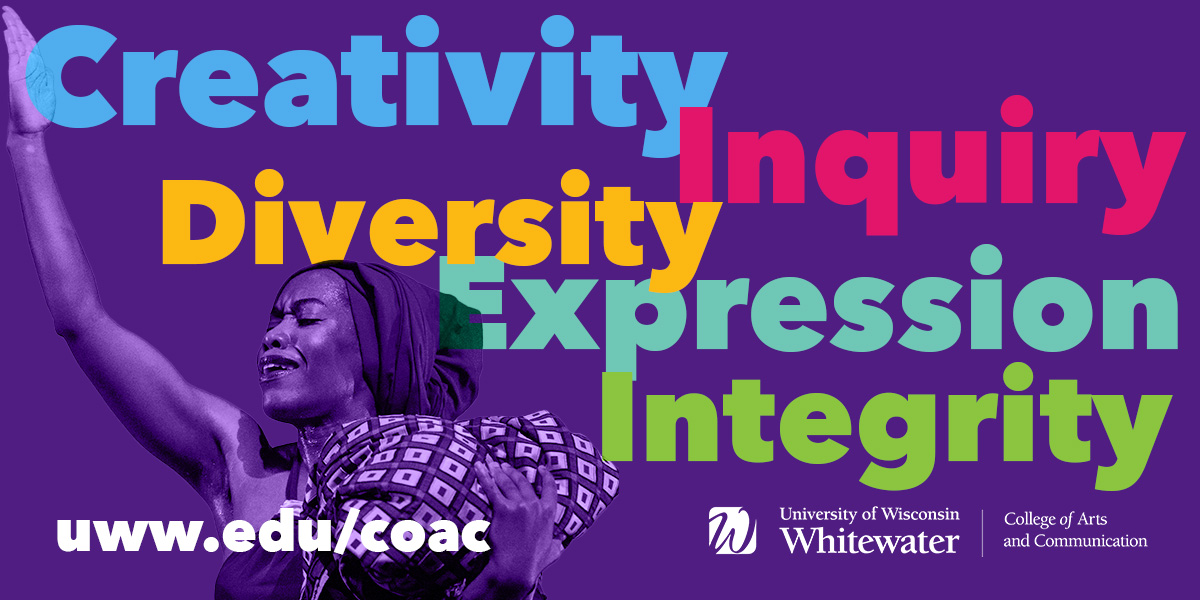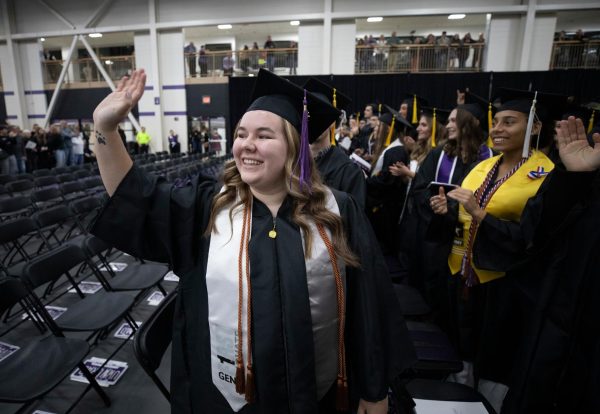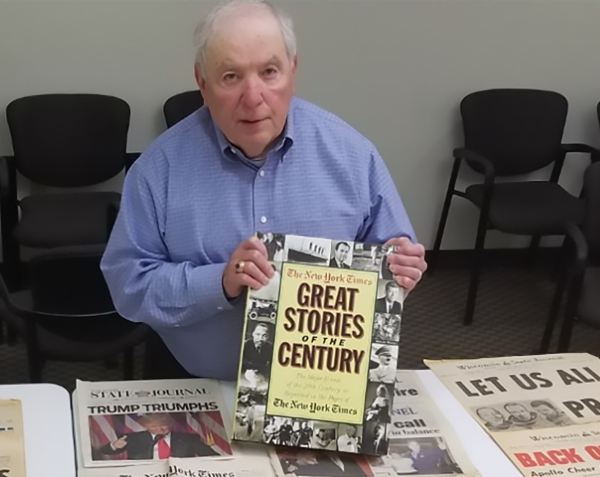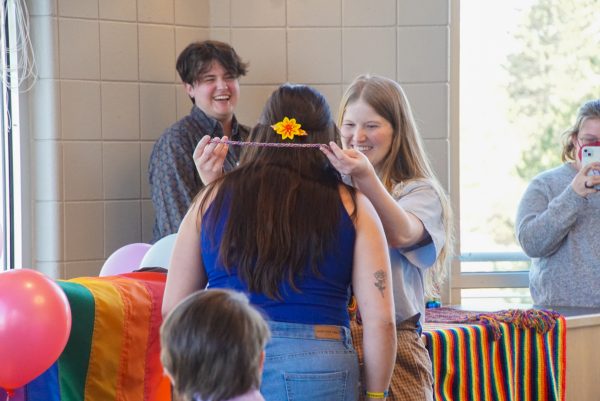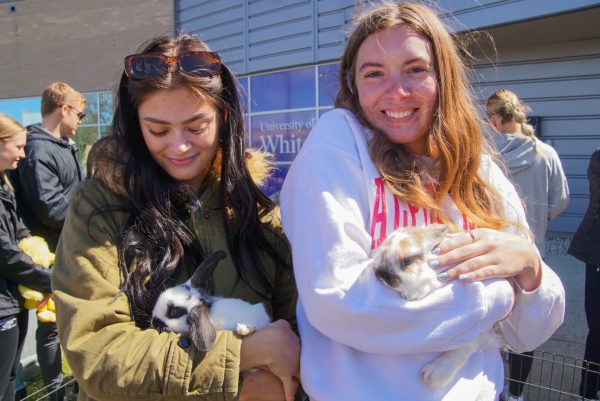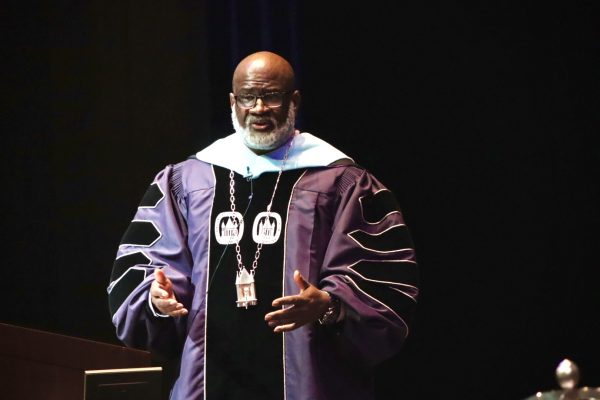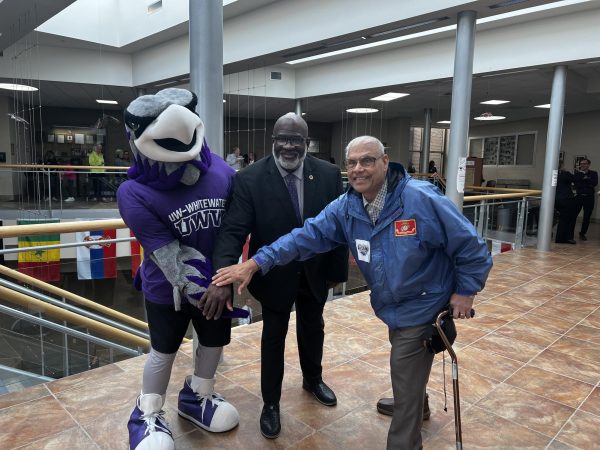Community-based learning gets official designation
February 17, 2020
Community-based learning is a practice not unfamiliar to the University of Wisconsin-Whitewater campus. However, many students still wonder what exactly the classes defined as community-based entail. But, with a new letter designation coming in the fall, students will be able to see what courses are community-based and what they entail.
“Community-based learning is where you incorporate into a class significant outreach work that will involve community partners,” said Kate Ksobiech, an associate professor in the communication department.
Ksobiech and many other professors utilize the community-based learning practice that the University of Wisconsin-Whitewater has had for many years. Professors partner with an organization, business or program in the community and have students in that designated class volunteer time outside (and sometimes inside) of the classroom to work with that specific program.
“I usually end up getting multiple partners so that students can work on different kinds of projects and different kinds of issues,” she said. “For example, I do a health advocacy class and I have used the vaping issue. I have had students go into the area middle schools and high schools to present to students, also to work during parent-teacher conferences to try and educate parents.”
Ksobiech has also utilized her community-based classes to work on other initiatives such as sexual assault awareness, media outreach for businesses and working with non-profit organizations.
Although Ksobiech works in the communication department, a vast majority of majors and minors on campus take advantage of community-based learning. From political science to Spanish, it’s not uncommon to find a community-based course for any student’s area of study.
Jodie Parys, the community-based learning coordinator, as well as a Spanish professor, has incorporated the high impact practice in many of her classes. She enjoys getting students involved with the community, as well as bringing awareness of what community-based learning does for students down the road.
“In my Spanish 321 class my students participate in at least 15 hours of community-based learning throughout the semester,” Parys said. “They have to work on a project that allows them to either use their Spanish language skills in some capacity or learn about the Spanish-speaking community in our local and regional area.”
Starting in the fall students will be able to see what courses are designated as community-based. When signing up for classes students will see a Z letter designation along with a note informing students that it is a community-based learning course. This allows them to get a closer look at what the class expects and is asking for.
“Some of the work may involve work on campus or off campus with a community partner,” she said. “Students should be able to search for those courses too. If they want to engage in that high impact practice they should be able to find it.”
While it may seem like a lot of extra work on top of what the classes already demand, the benefits of taking a community-based learning course can help students find a job, build their resumes and enhance their learning skills.
“It’s one of the recognized high-impact practices that have been shown to create a more meaningful and educational experience for students,” Parys said. “I believe the statistic is 73-78 percent of employers want students who have experience with community-based learning.”
According to the Association of American Colleges and Universities (AAC&U), 71 percent of employers and 78 percent of hiring managers said they would be more likely to hire a graduate with experience in a service learning project with a community organization. Even though this practice can generate success down the road, it also helps current students with their learning.
Hannah Zanow, a freshman marketing major with a Spanish minor, was a student in Parys’ Spanish 321 class. She experienced the benefits of being in a community-based learning course her first year on campus.
“Through community-based learning I joined an organization called Enactus, which focuses on social entrepreneurship,” Zanow said. “Within that, I had planned on doing hydroponics for Milwaukee, which is teaching kids in the south side of Milwaukee at a certain school how to use hydroponics and grow their own food. But as I joined Enactus, I realized that I wanted to switch over to a new project, and I actually got a co-lead position.”
Zanow works with a school in Guatemala that provides entrepreneurial programs to underprivileged women. She has been part of a team that has been collecting supplies to send to the school.
The reason Zanow was so excited to join a community-based learning course was because of a referral from a friend. She was excited to be in Parys’ class and work with the community.
“Through this class I’ve made so many new connections,” she said. “That’s what I’m grateful for. It’s nice putting yourself out there. It helps build your character.”
For any questions regarding community-based learning, contact Jodie Parys at [email protected].









